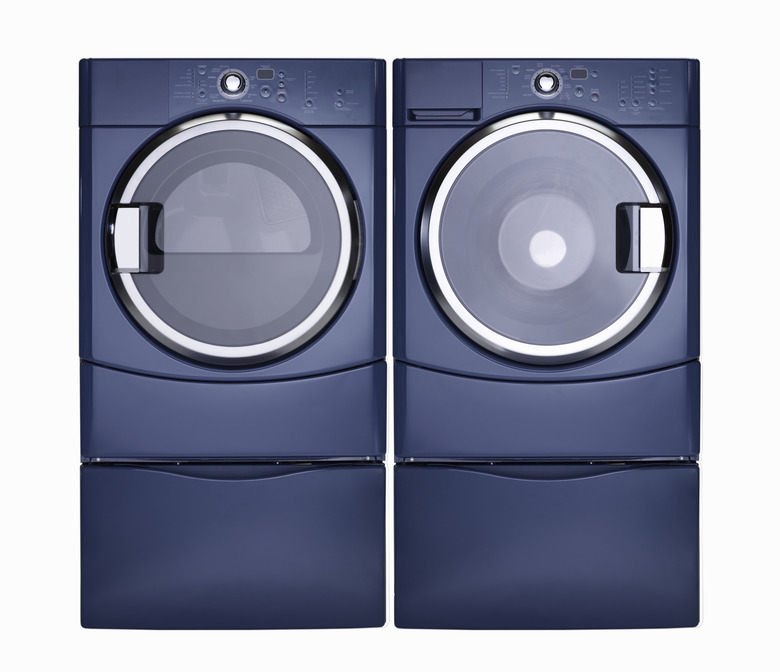Why Is My Dryer Leaking?
A clothes dryer will either leak because its exhaust system is clogged or it's not venting properly. Both problems can cause condensation to form in the drum or water to drip from the dryer's external vent. If you discover that your dryer is leaking, stop using it until you can address the problem to avoid damaging your dryer and having to pay hefty repair costs to have a professional fix it.
Clogged Exhaust System
A dryer must expel unwanted hot air from the drum to maintain a constant operating temperature for clothes to dry or else the dryer will overheat. A dryer releases hot air from the drum through the vent collar where it makes its way down ducting until it eventually reaches the external vent where it's typically dispensed outdoors. The hot air contains a significant amount of moisture and trace amounts of lint, which can linger in the dryer's exhaust system while the dryer runs. These two elements can form a gooey paste in the ducting that will block airflow if the exhaust system isn't cleaned regularly. The larger the blockage becomes, the more likely that your dryer will leak water that backs up into the dryer from the exhaust system. Thoroughly clean your dryer's exhaust system at least once a year and anytime that it starts leaking.
Improper Venting Configuration
If your dryer's exhaust system isn't configured properly, venting will be compromised and it could cause condensation to build up in the ducting. The exhaust system's ducting should be as straight and horizontal as possible so that air can disperse efficiently once inside. The more bends and turns in the dryer's ducting, the more places where moisture and lint can collect and create an obstruction. Anytime there's a blockage in the dryer's exhaust system, you could see condensation in the drum or water leaking from the external vent.
Dryer Venting Materials
Certain venting materials used for a dryer's ducting can cause moisture to form inside more than others. Avoid plastic, ribbed ducting and instead opt for one that's metal and non-ribbed. Metal non-ribbed ducting will decrease dry time and thus reduce the chance for condensation to deposit inside. In addition, moisture can get trapped in ribbed ducting, which can lead to a buildup.
Considerations
Even though 25 feet is the maximum length guideline for ducting, a shorter length is preferred to a longer one because air will have less far to travel to reach the external vent. However, sometimes a shorter vent isn't possible due to the location of your dryer and its proximity to an outside wall. In these situations, you can install a dryer boost fan obtained from a home improvement store to encourage swift air movement in the duct and cut down on the risk of a blockage occurring, which could lead to a leaky dryer.
